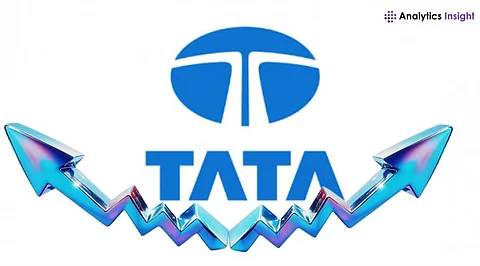

Tata Motors shares surged 2.45% in early May 2025, trading at ₹697.95, after a volatile period. The rally was driven by the approval of a commercial vehicle demerger and the India-UK Free Trade Agreement, which would benefit Jaguar Land Rover in India. A potential upside of nearly 50% means analysts remain cautiously optimistic about the stock’s future.
Tata Motors shares have seen a remarkable recovery in early May 2025. Its share price surged 2.45% to ₹697.95 as of 11.53 AM on May 8, 2025. This rebound follows a volatile period where the stock had touched a 52-week low of ₹535.75. Several key developments, including a strategic demerger and favorable policy changes, have spurred renewed investor confidence.
Let’s explore in detail the factors that position Tata Motors stock for long-term growth.
Tata Motors ' recent rally can be traced to two significant developments that have generated investor optimism:
Strategic Demerger: Tata Motors' shareholders have recently approved the demerger of its commercial vehicle business, which will now be a standalone unit. This strategic demerger will unleash value for shareholders. Each shareholder will be given one share of the new company for every share of Tata Motors. The move is perceived as a means of achieving targeted growth in the passenger as well as the commercial vehicle business.
India-UK Free Trade Agreement (FTA): India-UK FTA is expected to heavily reduce tariffs on auto imports from the UK, especially on high-end Jaguar Land Rover (JLR) vehicles. Under the FTA, tariffs will be reduced from 100% to 10% under a quota. JLR cars will become cheaper in India. This puts Tata Motors in a position to gain more market share from European luxury players and will likely make JLR's India sales jump significantly.
Tata Motors stock has witnessed high trading volumes, with 14.85 million shares changing hands. The traded value is over ₹1,035 crore. This rise in trading shows renewed investor interest.
The Tata Motors share price chart shows a trading value of ₹619.20 as of 12 PM:
The valuation ratios of the company are a trailing twelve months (TTM) Price-to-Earnings (PE) ratio of 8.08 and a Price-to-Book (P/B) ratio of 2.54, both of which are sector-average. The stock has a dividend yield of 0.86%, and the book value per share is ₹274.53. The TTM Earnings Per Share (EPS) is ₹86.29, though it has declined by 8.65% year-on-year. Thus, indicating some margin pressure but still demonstrating strong profitability.
Analyst opinion regarding Tata Motors is optimistic but guarded, with certain experts holding a positive view despite short-term technical setbacks. Presently, the stock is trading below its important moving averages. It reflects some short-term uncertainty. However, the medium- to long-term perspective is optimistic owing to the company's solid fundamentals and strategic initiatives.
Analysts have set an average price target of ₹848 for 2025, with some targets as high as ₹1,110 by the end of the year, indicating a potential gain of almost 50% from current prices. Broker firms such as CLSA and Morgan Stanley are the most optimistic on Tata Motors. Thus, attributing the demerger and JLR's performance to be the primary drivers towards recovery. In contrast, Jefferies has downgraded its rating, recommending caution against near-term volatility.
Tata Motors stock’s recent rally is powered by both structural changes and positive policy developments. Though short-term technical signs point toward caution, the strategic steps of the company, like demerger and gains from the India-UK FTA. So, the company is an attractive bet for those with a medium to long-term horizon. However, investors should keep an eye on future movements of the stock to make informed decisions.
